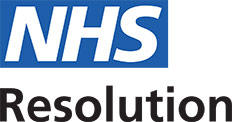2017/18 annual report and accounts published
Formal litigation reduced to the lowest recorded level as NHS Resolution mediated more claims in a single year than in its entire history. This was accompanied by a welcome reduction in claimant legal costs (by £31.8 million) for the first time in many years as NHS Resolution implemented the first year of its five year strategy – Delivering fair resolution and learning from harm.
However, despite a plateauing in the numbers of new clinical negligence claims, the cost of claims continued to rise, largely due to a change to the way in which compensation is calculated.
Figures for the past year show that the NHS paid out more than £1.63 billion in damages to claimants in 2017/18, an increase from £1.08 billion in 2016/17. £404 million of the increase (33%) was due to a change in personal injury discount rate (PIDR) from 2.5% to minus 0.75. Legislation to address this is currently progressing through parliament.
The growing interest both from our NHS members and those who act for injured patients in working together to resolve claims for compensation without going to court has been very encouraging and we hope to build on this so that mediation is no longer seen as novel in healthcare. However, the cost of clinical negligence is at all-time high. The total provisions for all of our indemnity schemes continue to rise from £65 billion last year to £77 billion as of 31 March 2018 which brings a renewed urgency to efforts across government to tackle the drivers of that cost.
Helen Vernon, Chief Executive of NHS Resolution
A flagship of NHS Resolution’s strategy has been its focus on safer maternity care. In April 2017, it launched an Early Notification scheme for incidents involving potential brain injury at birth in order to increase the support it provides to families and healthcare staff and to accelerate the investigation of compensation.
It is important to support NHS staff who are involved in these tragic incidents in doing what is right for families without legal process getting in the way. The scheme has helped to get financial support to families at a much earlier stage, when it can make a difference and will also mean that lessons can be shared across the NHS much sooner to prevent the same thing happening again.
Helen Vernon, Chief Executive of NHS Resolution
In 2017/18, NHS Resolution received 416 notifications of obstetric incidents that met the scheme’s criteria (see more about our Early Notification scheme here).
Headline figures for 2017/18
Clinical claims
- The number of new clinical negligence claims reported in 2017/18 was 10,673 compared to 10,686 received in 2016/17, a reduction of 13 claims (0.12%).
- The total payments relating to our clinical schemes increased by £520.4 million (30%), from £1,707.2 billion to £2,227.5 billion (inclusive of the increase due to the change in the PIDR).
- Despite the small decrease in the number of claims reported, damages paid to patients rose significantly from £1,083.0 billion to £1,632.0 billion, an increase of 50%. In part, this is because payments represent claims notified in previous years. However, £404 million of this additional expenditure is because of the reduction in the PIDR on 20 March 2017, and represents 18% of the total value of payments made in 2017/18 of £2,227.5 billion.
- The greatest number of claims received across all our clinical negligence schemes relate to the Emergency medicine speciality (13%) and orthopaedic surgery (12%). The trajectory of the number of new claims from both specialties had been trending downward over the last five years. However, in 2017/18 we received 1,395 new Casualty/A&E claims, which is an increase of 88 claims (7%) on the previous year. Over the same period, we received 1,281 new orthopaedic surgery claims. These incoming claims can relate to incidents that occurred over a number of different years. The overall downward trend is very encouraging, especially in orthopaedic surgery, where the number of new clinical claims has reduced by 26% (from 1,736 to 1,281) over the past five years.
- Obstetrics claims represented 1,067 (10%) of clinical claims by number in 2017/18, but accounted for 48% of the total value of new claims reported at £2,166.3 billion.
- Claimant legal costs have fallen for the first time in recent years by £31.8 million (6.4%) from £498.5 million to £466.6 million.
- Defence legal costs have increased by 2.5% to £128 million from £125.7 million.
Non-clinical claims (primarily employers’ and public liability)
- The number of non-clinical claims fell to 3,570 from 4,082 (13% decrease)
- Damages (excluding the PIDR effect) and legal costs all reduced by £2.2 million (3.8%) in total. The PIDR change added £2.3 million (8%) to damages costs in 2017/18.
- In 2017/18 the highest value and number of non-clinical claims were attributed to orthopaedic injuries resulting from slips, trips and falls, representing 2,548 (58%) of non-clinical claims by number, and £35.3 million (72%) of the total value of new claims reported.
Useful information
- The majority of claims we receive (69.6% up from 67.8% the previous year) were resolved without formal court proceedings and, in these early stages; more claims are resolved without payment of damages than with payment of damages.
- Just under one third of claims end up in litigation with less than 1% going to a full trial (where most end in judgment in favour of the NHS).
We provide the following core services to our customers
- Claims Management delivers expertise in handling both clinical and non-clinical claims to members of our indemnity schemes.
- Practitioner Performance Advice (formerly the National Clinical Assessment Service or NCAS) provides advice, support and interventions in relation to concerns about the individual performance of doctors, dentists and pharmacists.
- Primary Care Appeals (formerly the Family Health Services Appeal Unit or FHSAU) offers an impartial tribunal service for the fair handling of primary care contracting disputes.
- Safety and Learning service helps to make the NHS a safer place by learning from harm and sharing best practice to reduce future risk.
An explanation of the indemnity schemes we manage can be found on page 14 of the Annual report and accounts 2017/18.






